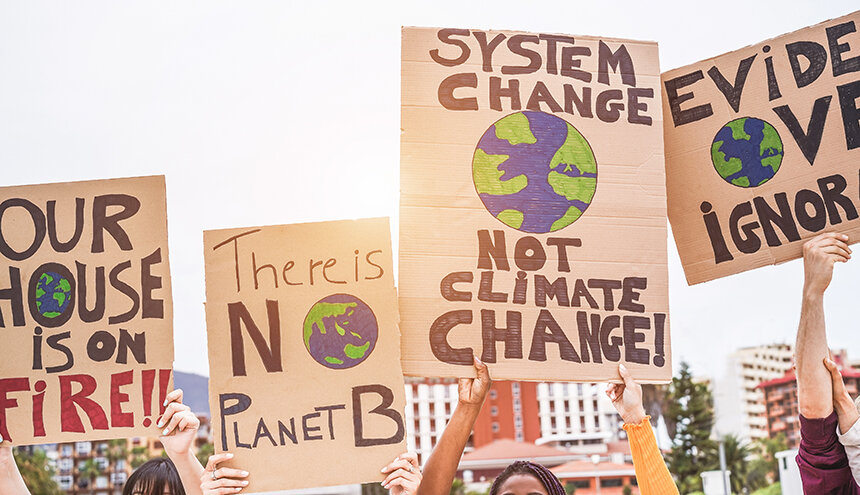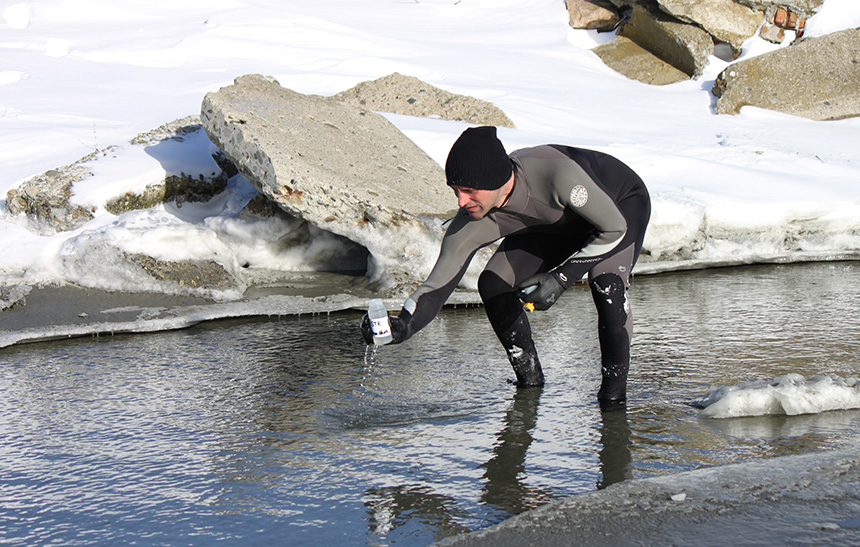Toxic Debate About Siting Schools on Brownfields
Rhode Island's most vulnerable populations, most notably inner-city children, seem to be the ones impacted when it comes developing on contaminated sites. A law that set stricter school building protections could be weakened.
April 11, 2013
PROVIDENCE — Less than a year ago, Rhode Island passed a bill that prohibited the construction of schools on industrial waste sites where there is potential for toxic vapors to seep into classrooms. The law was proudly touted by both state officials and environmental justice advocates as the most stringent in the nation.
Now, two months before the law is even a year old, a movement is underway to gut it.
In fact, one of the law’s most avid supporters, the state Department of Environmental Management (DEM), recently submitted testimony in favor of the two sister bills looking to, in the words of those who spent three years getting the 2012 version passed, diminish the law’s effectiveness.
Opponents recently came out in force against bills (H5617 and S520) that would allow construction of schools on contaminated industrial sites where there could be potential vapor intrusion.
At two recent hearings, the Environmental Justice League of Rhode Island, the Sierra Club, Clean Water Action and the Rhode Island Federation of Teachers and Health Professionals all argued that the legislation weakens the existing law.
“It’s a rollback of good environmental legislation to protect the purse of private industry,” Steve Fischbach, a Rhode Island Legal Services attorney who helped draft the 2012 law, said at an April 4 hearing at the Statehouse.
The Rhode Island Mayoral Academies has pushed for the revision so it can build a new charter school on a contaminated site at 1135 Roosevelt Ave. in Pawtucket.
“If we don’t develop these properties, then they lie fallow,” Michael Donegan, an attorney for the school, said at a recent hearing.
Amelia Rose, director of the Environmental Justice League of Rhode Island, which pushed hard for the 2012 law now on the books, supports the idea of reusing brownfields, but not at the possible expense of society’s most vulnerable.
“We value the reuse of brownfield sites. It doesn’t do anyone any good to leave them festering,” Rose said. “But there are appropriate uses, like commercial, industrial uses that aren’t polluting and open space, which many inner-city neighborhoods are lacking. They would be excellent sites for solar panel arrays and wind farms. They’re not appropriate for schools, senior centers and shelters.”
She said the use of brownfield sites for the latter impacts populations society deems expendable and disposable.
The DEM, however, takes a different view of the pending bills. In a letter (pdf) to the House Committee on the Environment and Natural Resources, agency director Janet Coit wrote that “while DEM continues to support the intent of the law, the Department has faced significant obstacles in administering the law as written. The law requires DEM to make concrete decisions based on the word ‘potential’ for hazardous materials and/or petroleum to volatilize into indoor air. While there is some guidance provided by EPA to help define ‘potential,’ the law gives no direction as to what the Department should compare analytical results to.”
The bill helps developers clarify the standards for addressing pollution at a contaminated site and it puts in “financial assurances” that pay for any malfunctioning pollution venting systems, according to the DEM.
Proponents of the 2012 law aren’t buying DEM’s explanation or what the new bill’s summary describes.
“The summary description says this bill will strengthen standards when actually it will weaken them,” Rose said. “They’re the strongest in the nation now.”
Opponents of the revised school siting bill also say financial assurances have to be maintained and monitored, could lead to months or years of litigation and systems do fail.
“If we’re even adding a one-in-one-million chance for a risk of cancer that is unacceptable,” Rose said. “Vapor intrusion is an emerging science. The science is changing, like when the threshold for lead went down. Kids are more susceptible to chemicals. Why risk it with these sites?”
Current law
The most compelling testimony at an April 10 hearing came from Holly Dygert, who recalled efforts to have vapors from remediation work being done at a former coal-gasification plant across the street from her daughter’s school in Pawtucket tested for toxins. Dygert said the DEM couldn’t assure her that the odors were harmless, despite the agency’s oversight of the property. The current owner of the 23-acre site, National Grid, assured her that the fumes were harmless. She eventually learned that fumes from the work had in fact violated health standards on several occasions.
The DEM, she noted, lacks the money and staff to effectively monitor polluted sites. “Things like this seem to happen over and over again,” she said. “Mistakes happen all the time.”
The current law was drafted after schools were proposed or built on polluted sites, such as Alveraz High School, Del Sesto Middle School and Anthony Carnevale Elementary School.
Last year, before the school siting bill was passed, Liz Stone, a DEM spokeswoman, described the attitude of those pushing for the new legislation as, “let’s learn from how it should not have happened,” referring to the two Springfield Street schools, Del Sesto Middle School and Anthony Carnevale Elementary School.
So what did happen on Springfield Street?
The conflict started in March 1999, when local residents saw bulldozers breaking ground on an overgrown but well-known former dump. The site had been selected for the schools in 1998, but construction began before it was permitted, and with no communication to the surrounding community. This lack of transparency, as much as the potential dangers for students, caused an uproar.
The landfill on Springfield Street was unique because, while an estimated 300,000 tons of waste and fill material were dumped there before the site became overgrown, it was never a licensed dump. In 1999, the city, which had operated the site in the 1960s and ’70s, denied that it had been a dump at all.
But testing revealed that the soil there was contaminated with heavy metals and dangerous volatile organic compounds (VOCs) — chemicals that easily escape the ground and enter the air we breathe. While soil capping can block heavy metals — there’s a minimum 2-foot cap of clean soil at Springfield — VOCs are trickier. Buildings can have a “chimney effect,” pulling volatile substances out of the ground and into their interior air.
Concerned residents in the Springfield Street neighborhood teamed up with Rhode Island Legal Services to file civil action lawsuits against the city and DEM. One suit charged “environmental racism,” because the prospective student body was predominantly non-white; another charged failure to give adequate notice of the planned construction and demanded that the schools not be opened due to potential hazards.
But the schools were completed, and continue to operate. To counteract the potential health hazards, both schools include a foundation-level — or “sub-slab” — ventilation system and air-monitoring systems. The systems are inspected quarterly by DEM and independently by the Providence company Fuss & O’Neill Inc.
This ventilation system works by a vacuum that sucks out potentially contaminated air at the foundation and routes it through a pipe to the roof, where it is released.
Alvarez High School was built on the former site of the Gorham Manufacturing Co. As a result of the various jewelry manufacturing processes used at the Gorham factory for nearly a century, much of the land and water on the Adelaide Avenue site were significantly contaminated. Chemical solvents, such as trichloroethylene (TCE) and perchloroethylene (PCE), that were used to clean metal and machine parts in the factory seeped into the land and created underground pools.
Repeat performance
Rhode Island’s school siting bill wasn’t drafted until 2009 — partly because the state had no organized environmental justice advocacy groups until 2007, when the Environmental Justice League of Rhode Island was founded.
Gov. Lincoln Chafee signed the school siting bill into law June 6, 2012. At the event to celebrate the bill’s passage, Coit said, “This law successfully differentiates between those sites that can be safely and effectively remediated, and those sites that pose more significant management and monitoring challenges.”
Ten months later, those who championed the law don’t understand what has changed.
The law took three years to enact and now efforts are underway to undermine it, said Jamie Rhodes of Clean Water Action. The legislation was vetted by the DEM, he said, and it maintains that no level of harmful vapors are acceptable. “We went through the process last year and we said it’s not OK for our children.”
Rep. John Edwards, D-Tiverton, sponsor of the House bill said new technology removes the harmful vapors. The lack of land in urban areas, he said, makes it necessary to build on contaminated sites.
“You are able to build on what was an existing brownfield and not have any contamination come through and endanger the inhabitants,” he said.
Sen. William J. Conley, D-East Providence, however, has noted that the new financial reserve provisions aren’t foolproof, as proven by a recent case in East Providence, where a vapor venting system failed but the reserve funds have not been released to fix it.
As one person who testified at a recent hearing asked as she left the Statehouse, “If these properties are so great, why aren’t millionaires buying them up?”
Future hearing are expected on both bills, and the Environmental Justice League of Rhode Island has requested the site investigation of 1135 Roosevelt Ave. in Pawtucket from the Rhode Island Mayoral Academies and is hoping to meet with DEM director Coit.
Categories
Join the Discussion
View CommentsRecent Comments
Leave a Reply
Related Stories
Your support keeps our reporters on the environmental beat.
Reader support is at the core of our nonprofit news model. Together, we can keep the environment in the headlines.
We use cookies to improve your experience and deliver personalized content. View Cookie Settings




The problem with the law is threefold. On the first point, the law has no foundation in the risks associated with indoor air. Blanket statements like "even a one in a million chance is unacceptable" belie the fact that we live in an environment impacted by man's activities. The standard used by EPA and other regulatory bodies in carcinogenic studies to determine acceptable risk for unrestricted uses (kids, gardens, residents, schools and day cares) is in fact 1 in a million.
The second problem with the law is exactly what Senator Edwards points out. In the urbanized areas of the state, there are no fallow uncontaminated properties available other than Roger Williams Park in Providence and McCoy Stadium in Pawtucket. Cities are currnetly forced to keep schools in existing buildings as they crumble without any ability for expansion or re-siting.
The third flaw in the law is the lack of a definition of the word “potential”. Many compounds have different potentials to move into the vapor form under different environments. Some are more toxic than others. The law as written allows for no investigation to show whether there is an actual risk. The systems functioning at Alvarez and Springfield Street Schools have operated as designed and protected the students throughout their operational history and provide stringent procedures to follow in the even of any equipment malfucton or contaminant detection.
The law has many good intensions, and with additional input from DEM, academia and the regulated community, it can be fine tuned to safeguard students and faculty from exposures and increased risks as it was intended to do. Amending the law to reflect reality and scientifically defensible data makes far more sense than proclaiming one’s environmental sensitivities while proudly standing in a corner surrounded by wet paint.
If RIMA's goal was to actually set real defensible standards we would work with them, but the new bills as written do not do that.
The challenge of the contaminated world we live in is that we will very rarely know a definite hazard, and will often only be able to identify potential hazards. When we are looking at exposures that happens to children we often don't know the damage until they have become adults. Many hormone disrupting and cancer causing chemicals change the way the growing body develops. For children, it isn't necessarily how much exposure, but when during the stage of cell growth and development exposure happens. So for children a little exposure can do great harm. For this reason, if we are to apply the precautionary principle, those who are most vulnerable to toxins are the very citizens who deserve our highest level of protection. A society who is willing to place the health of its children at risk is itself at risk.